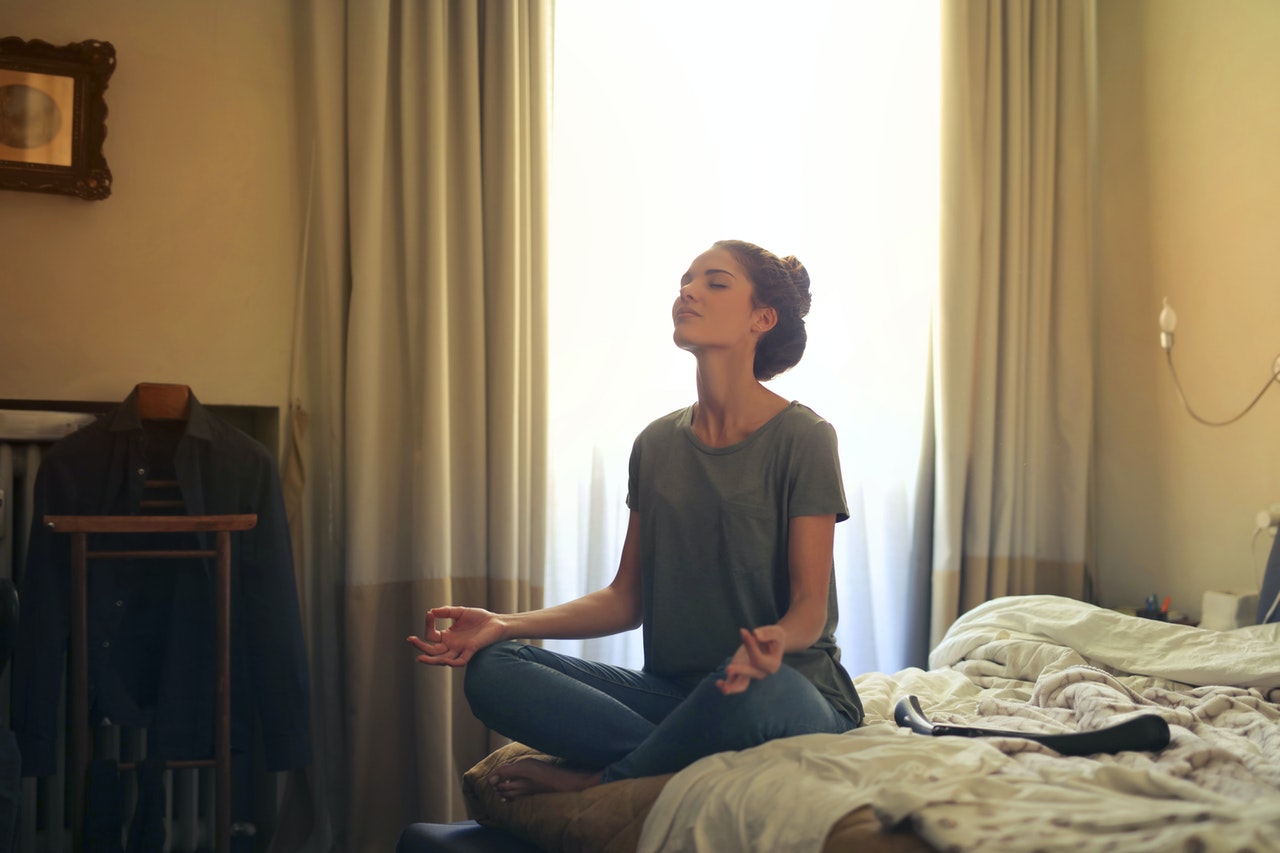Yoga is an ancient practice that has long been heralded for its many health benefits, from improving flexibility to reducing stress. But did you know that doing a short yoga routine before bed can dramatically improve your quality of sleep, as well as your quality of life?
In an age of rampant stress and chronic sleep deprivation, it’s important to know what you can do to fall asleep faster and to improve your quality of sleep.
Below are five reasons you should consider practicing yoga before bed:
1. Calm the mind & improve mental clarity
Oftentimes people have trouble getting a good night’s sleep because they’re unable to clear their minds of mental clutter and stressors. Practicing a yoga routine before bed that focuses on breath technique will help put your body and mind in a calmer state, known as the relaxation response.
The relaxation response is the opposite of the fight-or-flight response, and studies have shown it can be elicited through yoga practice, meditation and deep breathing techniques. When this happens, your body enters a lower state of arousal that helps to clear your mind of worries so you can fall asleep faster and stay asleep longer.
2. Reduce stress, depression and anxiety
For those who have high levels of stress, depression or anxiety, it can be nearly impossible to fall asleep at night. Stress is often a large factor in both depression and anxiety, and people with depression tend to have elevated levels of the stress hormone cortisol. Practicing yoga before bed can help lower cortisol levels and release tension by stimulating the parasympathetic nervous system, which helps your body and mind feel more relaxed and contributes to a better night’s sleep.
In fact, a study by Massachusetts General Hospital found that the physiological state one can achieve through the three yoga elements of posture, breathing and meditation produced an immediate change in energy metabolism, immune function and insulin secretion. Insulin secretion can trigger the production of serotonin, the “feel-good” neurotransmitter that is sometimes artificially stimulated by anti-depressants.
3. Relax muscles & ease joint pain
After a long day of work, many people experience nighttime aches, joint pain and muscle tension. This is especially common among the elderly, people who work on their feet all day, as well as those who work desk jobs. Practicing yoga and stretching before bed will help release any muscle tension you built up throughout the day, which is essential to achieving a good night’s sleep. It will also help to relax your shoulders, neck, legs and more.
4. Renew your body
Two main ways yoga can help renew your boy is by helping to release toxins, and by increasing the circulation of oxygen. Toxins are often stored in organs and tissue, and yoga can help to release them from the body through various twists, folds, stretches, and sweating. Yoga also helps to release mental and emotional toxicity through meditation and deep breathing.
Pranayama, sometimes also referred to as breathwork,is a type of breath technique that improves the circulation of oxygen in your body to help reduce stress, improve mental clarity and improve physical health. Another added benefit to focusing on breath technique before bed is that it can help with other sleep-related problems like snoring and sleep apnea, both of which can be caused by incorrect breathing.
5. Improve quality of life
Sleep is essential to overall health, and better sleep leads to an improved quality of life. The amount of time and the quality of sleep we get directly impacts how we perform every day. Sleep is meant to occupy a good portion of our lives because that’s when our bodies can gather the energy required to complete daily functions and to process complex thoughts.
Without adequate sleep, both the body and mind suffer, rendering it impossible to perform to the best of our abilities. One of the easiest and most effective ways to improve your quality of sleep, and ultimately your quality of life, is to practice a yoga routine every night before bed.
For more health and fitness-related resources, click here to visit our main blog page.
